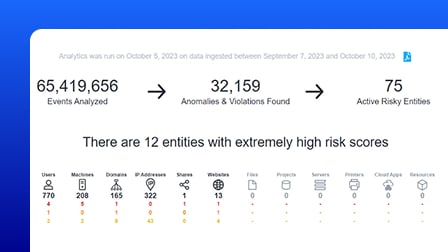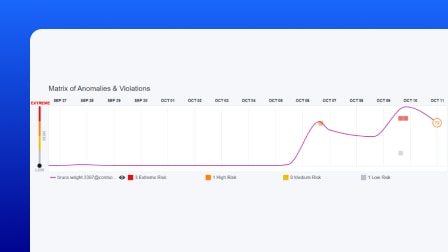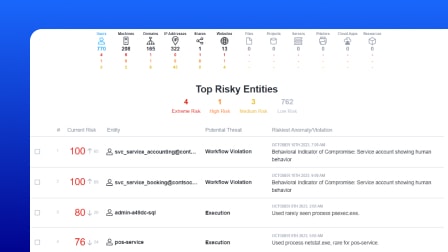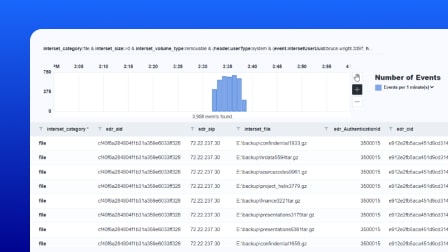Why OpenText
Why OpenText
Overview Why OpenText
OpenText brings decades of expertise to help you unlock data, connect people and processes, and fuel AI with trust
Manage and connect data
Unify data seamlessly across your enterprise to eliminate silos, improve collaboration, and reduce risks
AI-ready information
Get AI-ready and transform your data into structured, accessible, optimized information
Built-in security and compliance
Meet regulatory and compliance requirements and protect your information throughout its lifecycle
Empowering people
Overview Empowering people
OpenText helps people manage content, automate work, use AI, and collaborate to boost productivity
Customers
See how thousands of companies around the world are succeeding with innovative solutions from OpenText
Employees
Our people are our greatest asset; they are the life of the OpenText brand and values
Corporate Responsibility
Learn how we aspire to advance societal goals and accelerate positive change
Partners
Find a highly skilled OpenText partner with the right solution to enable digital transformation
How we compare
Content Management
Service Management
Deploy anywhere
Overview Deployment options
Explore scalable and flexible deployment options for global organizations of any size
Sovereign cloud
Local control. Global scale. Trusted AI
Private cloud
Your cloud, your control
On-premises
Free up resources, optimize performance and rapidly address issues
Public cloud
Run anywhere and scale globally in the public cloud of your choice
AI leadership
Overview Aviator AI
See information in new ways
OpenText™ Aviator AI
AI that understands your business, your data, and your goals
OpenText™ MyAviator
Say hello to faster decisions. Your secure personal AI assistant is ready to get to work
OpenText™ Business Network Aviator
Gain better insights with generative AI for supply chains
OpenText™ Content Aviator
Power work with AI content management and an intelligent AI content assistant
OpenText™ Cybersecurity Aviator
Improve your security posture with AI cybersecurity and agile threat detection
OpenText™ DevOps Aviator
Enable faster app delivery, development, and automated software testing
OpenText™ Experience Aviator
Elevate customer communications and experiences for customer success
OpenText™ Service Management Aviator
Empower users, service agents, and IT staff to find the answers they need
Aviator AI
Overview Aviator AI
See information in new ways
OpenText™ Aviator AI
AI that understands your business, your data, and your goals
OpenText™ MyAviator
Say hello to faster decisions. Your secure personal AI assistant is ready to get to work
OpenText™ Business Network Aviator
Gain better insights with generative AI for supply chains
OpenText™ Content Aviator
Power work with AI content management and an intelligent AI content assistant
OpenText™ Cybersecurity Aviator
Improve your security posture with AI cybersecurity and agile threat detection
OpenText™ DevOps Aviator
Enable faster app delivery, development, and automated software testing
OpenText™ Experience Aviator
Elevate customer communications and experiences for customer success
OpenText™ Service Management Aviator
Empower users, service agents, and IT staff to find the answers they need
Analytics
Overview Analytics
Predict, act, and win with real-time analytics on a smarter data platform
OpenText™ Aviator Search(AI)
Give users access to the answers they need, faster and easier, with multi-repository AI-based search that lets you contextualize everything from clicks to conversations
Business Network
Overview Business Network
Connect once, reach anything with a secure B2B integration platform
Content
Overview Content
Reimagine knowledge with AI-ready content management solutions
OpenText™ Content Aviator(AI)
Supercharge intelligent workspaces with AI to modernize work
Cybersecurity
Overview Cybersecurity
Integrated cybersecurity solutions for enterprise protection
OpenText Cybersecurity for SMBs & MSPs
Purpose built data protection and security solutions
OpenText™ Cybersecurity Aviator(AI)
Reinvent threat hunting to improve security posture with the power of agile AI
DevOps
Overview DevOps
Ship better software—faster—with AI-driven DevOps automation, testing, and quality
Experience
Overview Experience
Reimagine conversations with unforgettable customer experiences
Observability and Service Management
Overview Observability and Service Management
Get the clarity needed to cut the cost and complexity of IT operations
OpenText™ Service Management Aviator(AI)
Redefine Tier 1 business support functions with self-service capabilities from private generative AI
APIs
Overview APIs
Build custom applications using proven OpenText Information Management technology
OpenText™ Aviator Thrust
Build it your way with OpenText Cloud APIs that create the real-time information flows that enable custom applications and workflows
Device and Data Protection
Overview Device and Data Protection
Protect what matters, recover when it counts
Unified Endpoint Management Tools
- OpenText™ Endpoint Management
- OpenText™ ZENworks Suite
- OpenText™ ZENworks Service Desk
- OpenText™ ZENworks Configuration Management
- OpenText™ ZENworks Endpoint Security Management
- OpenText™ ZENworks Full Disk Encryption
- OpenText™ ZENworks Endpoint Software Patch Management
- OpenText™ ZENworks Asset Management
Solutions
Information Reimagined
Overview Information Reimagined
Get greater visibility and sharper insights from AI-driven information management. Ready to see how?
Knowledge reimagined
Transform daily work with enterprise content management powered by AI
Service Management reimagined
Cut the cost and complexity of IT service management, AIOps, and observability
Connections reimagined
AI-powered B2B integration for supply chain success
Conversations reimagined
Drive value, growth, and loyalty with connected customer experiences
Engineering reimagined
Agile development and software delivery? It only seems impossible
Security reimagined
Cybersecurity for the Enterprise
Decisions reimagined
Unlock insights with AI data analytics
Artificial Intelligence
Overview Aviator AI
See information in new ways
OpenText™ Aviator AI
AI that understands your business, your data, and your goals
OpenText™ MyAviator
Say hello to faster decisions. Your secure personal AI assistant is ready to get to work
OpenText™ Business Network Aviator
Gain better insights with generative AI for supply chains
OpenText™ Content Aviator
Power work with AI content management and an intelligent AI content assistant
OpenText™ Cybersecurity Aviator
Improve your security posture with AI cybersecurity and agile threat detection
OpenText™ DevOps Aviator
Enable faster app delivery, development, and automated software testing
OpenText™ Experience Aviator
Elevate customer communications and experiences for customer success
OpenText™ Service Management Aviator
Empower users, service agents, and IT staff to find the answers they need
Industry
Overview Industry solutions
Improve efficiency, security, and customer satisfaction with OpenText
Energy and resources
Transform energy and resources operations with cloud, cybersecurity, and AI
Financial services
Boost customer experience, compliance, and efficiency with AI
Government
Reimagine your mission with government-secure information management
Healthcare and life sciences
Improve care delivery and patient engagement with AI-powered solutions
Legal
Modernize legal teams with automated, AI-powered legal tech solutions
Manufacturing
Modernize manufacturing operations and logistics to reduce costs and ensure compliance
Retail and consumer goods
Enhance consumer engagement with omnichannel retail solutions and AI
Enterprise Application
Overview Solutions for Enterprise Applications
Run processes faster and with less risk
Services
Services
Overview Services
Achieve digital transformation with guidance from certified experts
Professional Services
Modernize your information management with certified experts
Customer Success Services
Unlock the full potential of your information management solution
Support Services
Turn support into your strategic advantage
Managed Services
Extend IT teams with certified OpenText application experts
Learning Services
Discover training options to help users of all skill levels effectively adopt and use OpenText products
Professional Services
Overview Professional Services
Modernize your information management with certified experts
Customer Success Services
Overview Customer Success Services
Unlock the full potential of your information management solution
Support Services
Overview Support Services
Turn support into your strategic advantage
Managed Services
Overview Managed Services
Extend IT teams with certified OpenText application experts
Learning Services
Overview Learning Services
Discover training options to help users of all skill levels effectively adopt and use OpenText products
Partners
Find a Partner
Overview Find a partner
Information is the heartbeat of every organization. We build information management software so you can build the future
Cloud Partners
Overview Cloud Partners
OpenText partners with leading cloud infrastructure providers to offer the flexibility to run OpenText solutions anywhere
Enterprise Application Partners
Overview Enterprise Application Partners
OpenText partners with top enterprise app providers to unlock unstructured content for better business insights
Partner Solutions
Overview Partner Solutions
Discover flexible and innovative offerings designed to add value to OpenText solutions
Resources for Partners
Overview Resources for Partners
Discover the resources available to support and grow Partner capabilities
Support
Overview Customer Support
Get expert product and service support to accelerate issue resolution and keep business flows running efficiently
Resources
Overview Resources
Explore detailed services and consulting presentations, briefs, documentation and other resources
This page is available for the following regions.
Europe, Middle East and Africa
Asia–Pacific
OpenText Core Behavioral Signals
Detect insider threats and behavioral anomalies in real time with UEBA

Behavioral threat detection and insider risk detection
Insider threats, both intentional and through negligence, can lead to huge losses. Organizational infrastructures and cybersecurity environments have become so complex that detecting insider threats is very time consuming.

OpenText™ Core Behavioral Signals is a behavioral analytics solution that uses unsupervised machine learning and UEBA cybersecurity to identify hidden threats within your organization. It automatically adapts to your environment, detects anomalous behavior, and helps threat hunters and security analysts act faster by surfacing the most relevant leads—no rule writing required.
Why OpenText Core Behavioral Signals?
OpenText Core Behavioral Signals uses AI to detect behavioral anomalies in real time, helping security teams uncover advanced threats, reduce alert noise, and cut investigation time.
- 24/7
always-on detection for insider threats
Detect risky activity and advanced threats without relying on rules, thresholds, or signatures—even when tactics change. - 100%
fully unsupervised machine learning
Behavioral baselines adapt automatically over time, eliminating the need for manual tuning or retraining models. - Billions
of events analyzed, a handful of leads provided
Surface meaningful threat leads by filtering signal from noise—no matter how much data you’re working with.

[OpenText Core Behavioral Signals] highlighted interesting behaviors in some of our applications that provided valuable intelligence. Having a deep insight into how our staff use the environment gives us the opportunity to spot anomalous behaviors and stop a malicious actor faster.
Read the customer story
Use cases
From insider risks to compromised credentials, OpenText Core Behavioral Signals provides threat hunting tools that reveal hard-to-detect threats through behavioral insights.
-
Identify employees or contractors behaving out of character—before data exfiltration or sabotage occurs. Behavioral baselines adapt in near real time to flag risky deviations.
-
Spot threats that don’t match known IOCs or signatures. Behavior-based detection uncovers novel attack techniques before they escalate.
-
Filter out the noise and get high-priority leads. OpenText Core Behavioral Signals surfaces real threats with rich context, reducing analyst workload.
-
Detect stolen credentials through behavior anomalies like unusual login times, privilege changes, or lateral movement—without creating rules.
-
Uncover low-and-slow threats by spotting changes in behavior of previously quiet accounts. This tactic is essential for detecting long-dwell intrusions.
-
Catch suspicious access to sensitive data and IP—before it’s leaked or shared. Behavioral context helps stop accidental or malicious misuse quickly.
Key features
Surface real risks faster using behavioral analytics, UEBA, and unsupervised machine learning—no tuning or rule-writing required.

Behavioral anomaly detection
Continuously monitors user and entity behavior to uncover suspicious activity, even when threats evolve or mimic normal behavior.

Unsupervised machine learning engine
Learns normal behavior patterns from your data automatically—no need for labeled data or manual rule creation.

Risk-based lead generation
Transforms raw logs into prioritized threat leads by identifying behavior that deviates significantly from the norm.

Reduced response time
Helps threat hunters move quickly by surfacing enriched leads that reduce investigation time and cognitive overload.
How to buy
OpenText Core Behavioral Signals
| Organizational risk at a glance |
|---|
| Dynamic anomaly and risk timelines |
| Fully transparent alerts |
| Analyst collaboration |
| MITRE ATT&CK mapping |
| Raw events viewer |
| APIs for SOAR and trouble ticketing system |
| CrowdStrike Falcon data support |
| Public cloud |
|---|
Accelerate the value of OpenText Core Behavioral Signals
Professional Services
OpenText Professional Services combines end-to-end solution implementation with comprehensive technology services to help improve systems.
-
Get a trusted partner to guide your information management path
Your journey to success
-
Accelerate your information management journey
Consulting Services
-
Propel your business into the future with modern solutions
NextGen Services
-
Unlock the full potential of your information management solution
Customer Success Services
Partners
OpenText helps customers find the right solution, the right support, and the right outcome.
-
Search OpenText's Partner directory
Find a Partner
-
Explore OpenText's Partner solutions catalog
Application Marketplace
-
Industry-leading organizations that enhance OpenText products and solutions
Strategic Partners
Training
Learning Services offers comprehensive enablement and learning programs to accelerate knowledge and skills.
-
Meet the demands of all types of users for effective adoption
Learning Services
-
Get expertise as needed
Flexible Credits
Communities
Explore our OpenText communities. Connect with individuals and companies to get insight and support. Get involved in the discussion.
-
Explore and vote on ideas, participate in the forums, and network with your peers
OpenText Enterprise Cybersecurity Community
-
Expert insights, threat intel, and product updates—built for SMBs
OpenText Cybersecurity SMB Community
Premium Support
Optimize the value of your OpenText solution with dedicated experts who provide mission-critical support for your complex IT environment.
OpenText Core Behavioral Signals resources
ArcSight Intelligence Behavioral Analytics
Learn moreArcSight Intelligence Threat Hunting
Learn moreArcSight Intelligence with Microsoft Defender for Endpoint
Learn moreArcSight for preemptive threat detection
Learn moreWhat is User and Entity Behavior Analytics (UEBA)?
Learn moreWhat makes ArcSight Intelligence different part 1
Read the position paperWhat makes ArcSight Intelligence different part 2
Read the position paperArcSight Intelligence Behavioral Analytics
Learn moreArcSight Intelligence Threat Hunting
Learn moreArcSight Intelligence with Microsoft Defender for Endpoint
Learn moreArcSight for preemptive threat detection
Learn moreWhat is User and Entity Behavior Analytics (UEBA)?
Learn moreWhat makes ArcSight Intelligence different part 1
Read the position paperWhat makes ArcSight Intelligence different part 2
Read the position paper
Insider threats in cybersecurity: When danger comes from within
Explore the complex issue of insider threats. From 3rd party risks to phishing and ransomware.
Read the blog
Select the right cybersecurity AI tools with these 3 crucial steps
Can AI really help you with your cybersecurity? Yes if you choose the right tools. Learn how.
Read the blog
Take the next step









